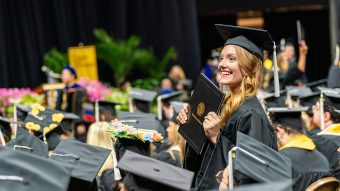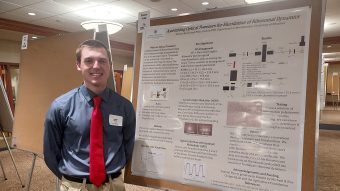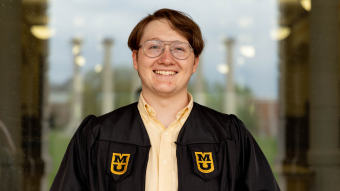
May 6, 2025
University of Missouri students received a front-row seat to the future of broadcasting this year through the PILOT NextGen TV Fellowship, part of the National Association of Broadcasters’ PILOT program.
As part of their yearlong fellowship led by Professor Jim Flink, journalism students Mikayla Higgins and Kavya Ramesh, alongside Mizzou engineering students Kenney Jackson and Praise Aruwajoye, developed a broadcast-based emergency communication interface designed for rural, under-connected communities that have limited cell service and internet connectivity.
The project was supported through the NextGen TV Fellowship, launched in 2021 with support from Amazon Web Services to give students the chance to design and build functional, broadcast-ready applications for ATSC 3.0.
The newest version of the Advanced Television Systems Committee standards, ATSC 3.0 is expected to transform how audiences interact with television by layering interactive content over live broadcasts and merging the internet with traditional over-the-air signals.
“ATSC 3.0 is a broadcast standard with the ability to tier content out of your television set and merge the internet with your television set,” Flink said. “For example, you’re watching a chef on the ‘Today’ show. With NextGen TV, you can click a button on your remote and see the recipe or the books they’ve published. It’s stackable content laid over the television broadcast.”
The team traveled to Brunswick, Missouri, where internet and cell service are “spotty at best,” Flink said. “But over-the-air television is reliable. That’s where this tech really shines,” he added.
However, Brunswick is still a 1.0 market — or a “one-dot world,” as Flink puts it. This means the team had to reverse-engineer their solution to work within existing infrastructure.
“What we’re doing is we’re basically reverse-engineering 5G’s content over your television set,” he said.
The team interviewed the town’s mayor and emergency management director to better understand the community’s needs. In addition to limited broadband access, Brunswick is divided by a river and has experienced significant emergencies in recent years, including two 100-year floods and a train derailment.
As the broadcast industry continues to evolve, projects like the Brunswick prototype show how journalism and technology can work together to serve the public good, especially in underserved areas.
“Focusing on a service and public safety project meant a lot to me,” Higgins said. “Collaborating with the team was an enjoyable experience that required a lot of problem-solving. The project pushed me to think more holistically and use my communication skills to articulate my ideas.”
Read more from the Missouri School of Journalism.


